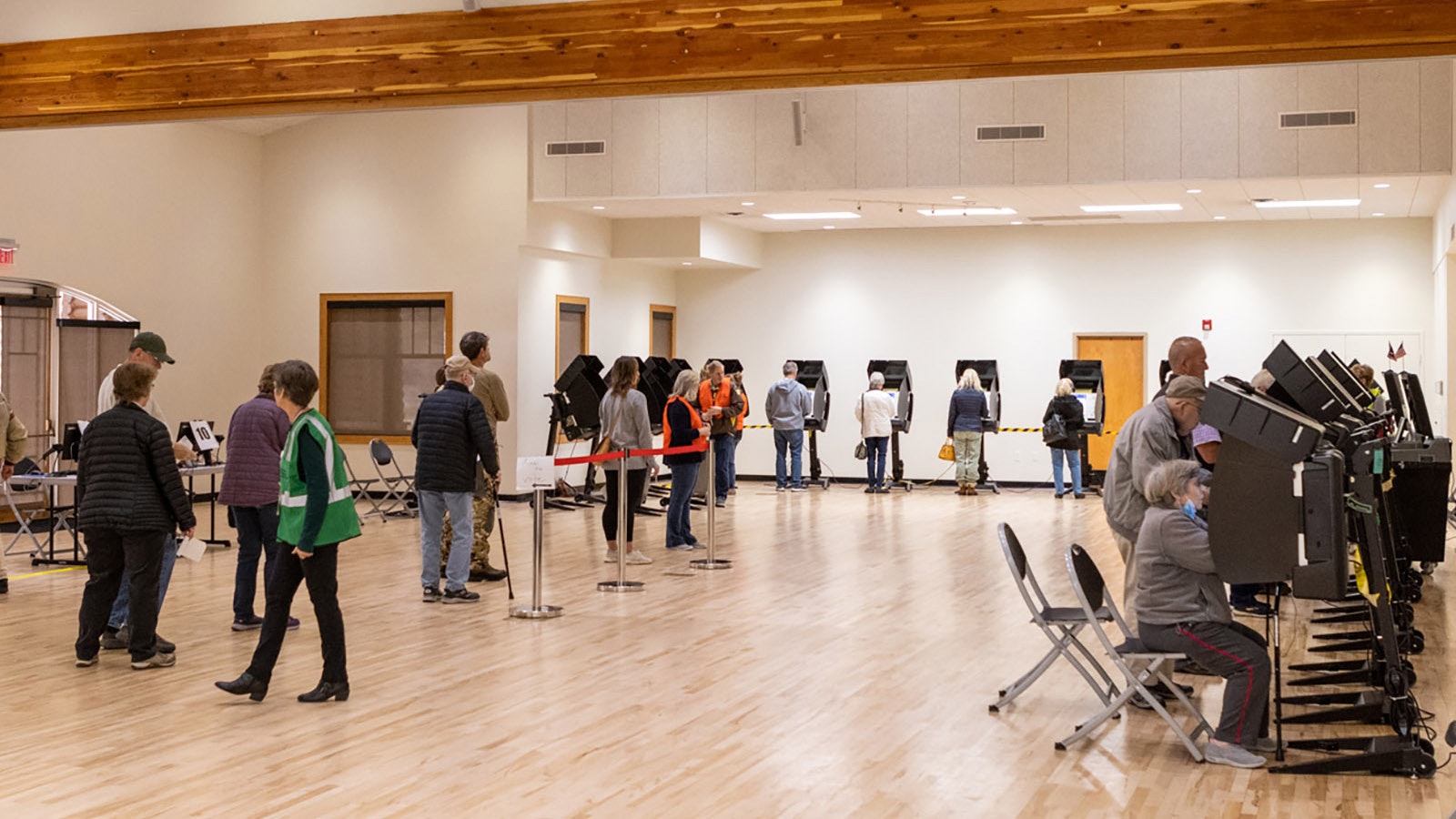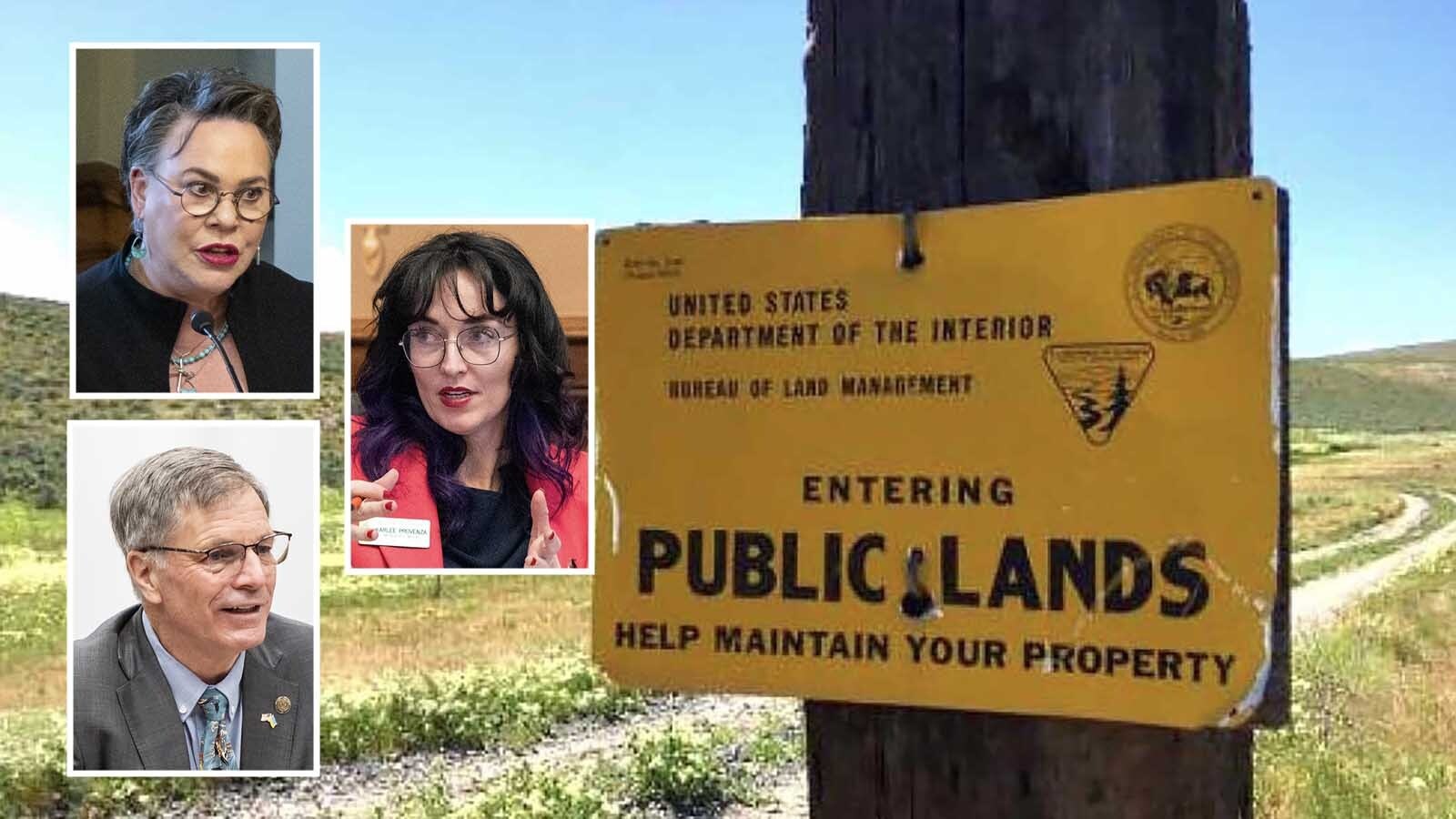By Leo Wolfson, State Politics Reporter
Leo@Cowboystatedaily.com
After a record-setting voter turnout for the Wyoming primary election in August, voter participation waned for Tuesday’s general election.
Overall, 198,153 people cast votes in the midterm election in the Cowboy State. Although non-presidential year elections historically draw a smaller turnout, it still represents the fewest people to participate in a general election in Wyoming since 2014.
Also, 15,921 more people voted in the primary than the general, the smallest gain between the elections in more than 28 years. General elections typically receive many more voters than their corresponding primaries.
In the last non-presidential November election in 2018, 205,275 people turned out to vote in Wyoming.
Is It Apathy?
Voter apathy may have been exacerbated by the fact there were no competitive statewide races. Every Republican candidate was either unopposed or beat their opponents by at least 45% of the vote.
Mary Lankford, a former Sublette County clerk of 32 years and a consultant for the Wyoming Association of Municipal Clerks and Treasurers, told Cowboy State Daily on Wednesday that she believes many voters were checked out or lost interest in the general election after casting voting in the Republican U.S. House race between frontrunners Harriet Hageman and U.S. Rep. Liz Cheney in the August primary.
“Hands-down, the Cheney-Hageman race was the force that brought people out,” she said.
A somewhat similar phenomenon happened in 2018 for the highly contested Republican governor’s race.
Many Races Already Decided
Lankford also mentioned how in non-presidential years, many local races, particularly in more conservative and rural parts of Wyoming, are usually decided in the primary.
“The primary is heavily contentious in very Republican areas,” she said. “People want to get out and vote for their candidates for commissioner and sheriff.”
She also said some voters are less motivated to vote when they see a race with a single candidate, or when there are the same number of people or fewer running for the quantity of seats available, a common scenario for school board and county commissioner elections.
“When they see that, they won’t vote, or in a lot of cases they won’t show up at all,” she said. “It’s really sad.”
This year was different when it came to school board elections, however, with many hotly contested races statewide.
By The Numbers
• 46%: The number of Platte County voters who turned out, the highest ratio in the state.
• 8,178: Turnout of the senate District 17 race between Sen. Mike Gierau, D-Jackson, Republican Steve Duerr and Libertarian Amanda Padilla, the highest of any state Senate race.
• 4,815: Turnout for the House District 23 race between Democrat Liz Storer and Republican Paul Vogelheim, the most votes cast for any state House race.
• 193,857: Votes cast in the U.S. House race, with Republican Harriet Hageman bringing home 132,172 of that tally.
• 193,954: Votes cast for Wyoming governor, indicating a greater interest in this race than for U.S. House.
• 8,174: People who voted in other races but did not cast a vote for superintendent of public instruction.
• 13,574: People who wrote-in a name for a candidate in preference of Republican Chuck Gray in the race for secretary of state.
• 0: Write-in or third-party candidates who won state-level elections on Tuesday.
Crossover Voting
One of the most pressing questions answered Tuesday was the size of crossover voting in the August primary election. The answer: 22,000 to 37,000 votes.
Grey Bull received the most votes of any Democratic candidate in the state with 47,241. In her 2020 campaign, Grey Bull received 66,576 votes. This decrease was likely caused by the 77,035 fewer votes cast in this year’s race for U.S. House than in 2020.
Grey Bull pulled about 25% of the vote in Tuesday’s election. Assuming this percentage roughly represents the state’s Democratic base, there should have been as many as 45,558 Democratic voters in the primary election if no one had crossed over to vote as Republicans. In reality, there were only 8,201.
This number comes with the assumption that virtually no Republicans voted for Grey Bull in the general election, an unlikely scenario.
In a University of Wyoming poll released shortly before the election, 67% of people who voted for U.S. Rep. Liz Cheney said they planned to vote for Grey Bull. This statistic is a bit muddy as it didn’t clarify between people who typically identify as Republicans or as Democrats.
The governor’s race may be a better indicator because of the significantly less attention and controversy given to this race.
Wyoming Democratic governor candidate Theresa Livingston received 30,676 votes in Tuesday’s election, 22,475 more than were cast for Democrats in the primary.
A range of 22,000 to 37,000 votes makes up 12%-21% of the votes cast in the August primary for U.S. House. Although this wasn’t enough of a factor to alter the results of the blowout primary race, it could have in a much closer race.
Many Republicans blamed crossover voting and “down-ballot voting” for their preferred candidates losing in primary state Legislature races. Down ballot voting is a theory proposed by more moderate Republicans, speculating that many Hageman voters drifted to candidates perceived to be more conservative because of the rhetoric used in the Cheney-Hageman race.





